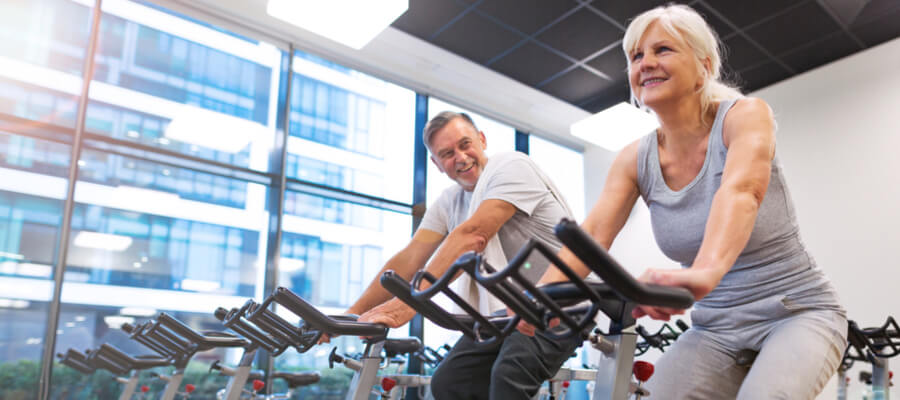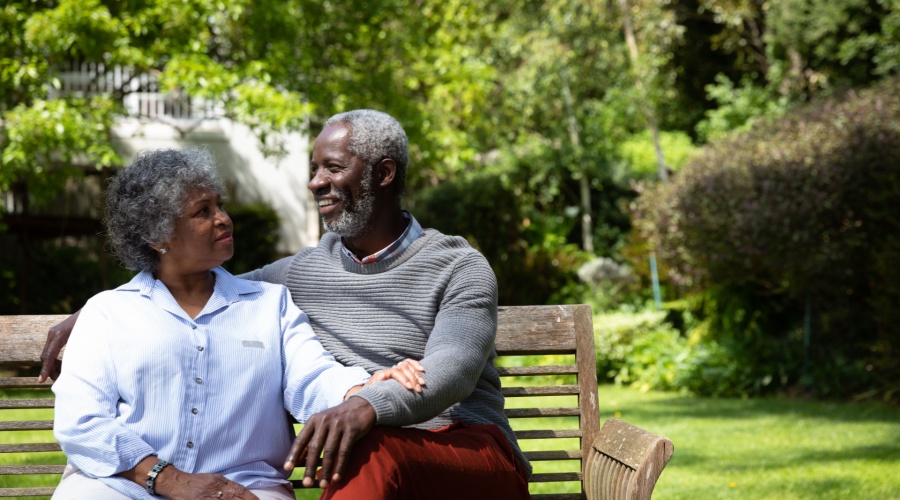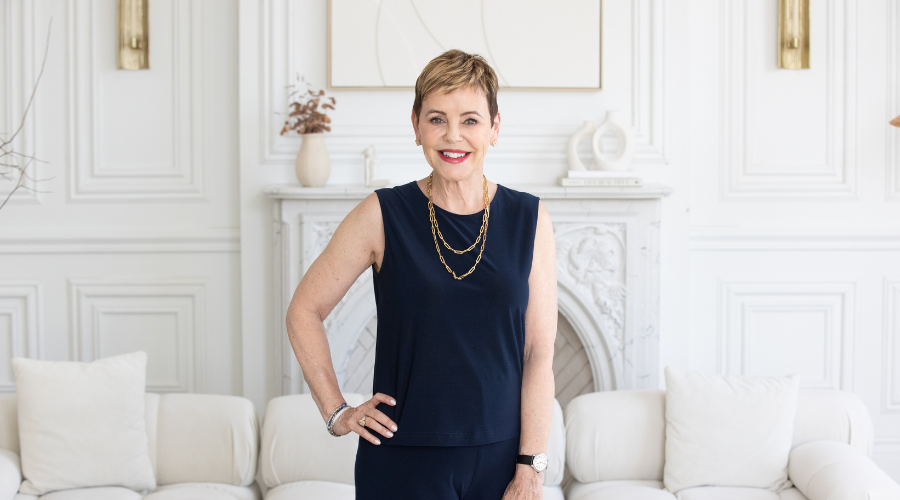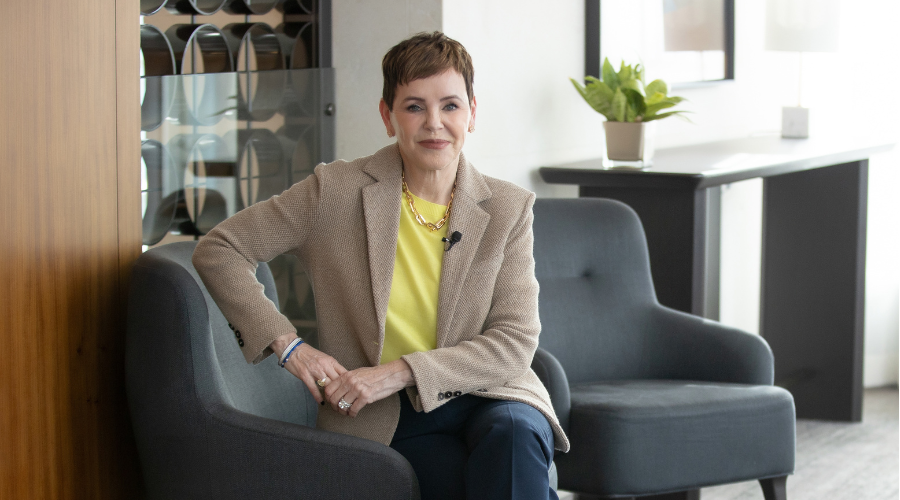February is Heart Month across Canada, so HomeEquity Bank reached out to a leading personal trainer and nutrition expert who works with Canadians 55+. We asked Ali El-Mokadem, a health and fitness specialist at the prestigious Toronto Athletic Club for some tips on living a healthier lifestyle in retirement. Here’s what he had to share with us:
Focus on Exercise
HEB: How often should Canadians 55 + exercise?
Ali: In order to achieve health benefits from aerobic exercise, the Canadian Physical Activity Guidelines recommend that adults aged 18 to 64 accumulate a minimum of 150 minutes a week of moderate to vigorous-intensity aerobic activity in bouts of at least 10 minutes. Moderate-to-vigorous means working at 70% to 85% of maximum heart rate.
HEB: Any tips for getting Canadians 55+ motivated to work out?
Ali: You have to start by getting an assessment from a qualified trainer. Someone who is certified with the Canadian Society of Exercise Physiologists is trained to follow a specific protocol to help you figure out your strengths and weaknesses so that you understand what you need to focus on, what you need to stay away from and how to progress properly.
This will help you focus your time and resources on what will challenge you best so that you can progress safely and effectively.
Once you figure that out, there are a host of available options from yoga classes, to group fitness classes, or even finding a workout partner so that you can keep each other motivated when the going gets tough!
HEB: What types of exercise do you recommend to Canadians 55 +?
Ali: There is more and more research that is showing benefits of all types of exercise, whether it’s high intensity interval training, aerobic training or resistance training. But in my professional opinion, it has to start with a proper assessment, to find out your strengths and limitations, and progress from there.
High intensity training is very demanding and taxing, and you want to make sure that you are physically and mentally prepared to take it on. Understanding your own body and how it moves will help you get the most out of any type of exercise.
After spending one or two sessions assessing my clients, I typically take them through a series of resistance training exercises and teach them how to listen to their bodies: What’s too much? What’s too little? How do I know when I should back off or keep going? How far down should I go into a squat? How fast should I walk/jog/run on a treadmill? Should I do any upper body training? If so, what should I focus on?
There are a lot of nuances to consider, and just like with any investment, you want to take your time and understand who you are, what you have, what you can own and what you can tolerate, when thinking about risk and reward.
HEB: Should Canadians aged 55+ and up focus more on cardio, or weight training?
Ali: It has to be a mix of both. There is no reason why anyone of this age group, who is otherwise healthy, can’t focus on both resistance/weight training or aerobic.
Again, following the Canadian Physical Activity Guidelines, in order to achieve health benefits of a strength-based workout, adults aged 18 to 64 should engage in resistance training exercises at least two times a week, between 15 to 60 minutes, working at 40% to 85% of heart rate reserve. Note that this depends on a person’s level of experience. Beginners should ease into it.
HEB: Does hitting the 10,000-step every day mark count as enough exercise? Is that the right number to aspire to?
Ali: Before answering this question, we have to understand the difference between physical activity and exercise. Physical activity is activity that is done for its own sake, because it’s fun and we enjoy it, like taking a walk with a loved one, playing with our kids or grandkids or going for a hike on a nice day.
Exercise, on the other hand, is structured and more methodical — for example, I have to jog three miles, on a treadmill, three times a week at a speed of four miles an hour with an incline of 1%. Or I have to do three rounds of a given set of resistance training exercises, using “X” number of pounds of weight times “X” number of repetitions. There is much more structure, and it may not always be fun…kind of like eating your vegetables, not always fun but are they ever good for us!
That said, I look at the 10,000-step mark more as a physical activity goal rather than an exercise goal; it should be the bare minimum. We should strive to be more physically active, but we should also incorporate the structure and challenge of exercise into our lives.
HEB: Any exercise tips you can share to those who don’t have access to a gym and want to work out from home?
Ali: Absolutely! There are plenty of trainers who offer “in-home” training. Find a qualified trainer, get assessed, and they can start you off with a program you can do in your own home. I always half-jokingly tell my clients that all I need is a six-by-six foot area, and I can give you an amazing workout session. Once you understand the basics of exercises, movement and your own capabilities, you can have a great workout anywhere, whether you are in a gym, at home, a hotel room, or even outside!
HEB: What do you recommend to Canadians 55+ to improve their mobility?
Ali: I know I’m beating a dead horse now, but I’ll say it again, get assessed by a qualified and professional trainer to figure out what your limitations are. For some people, lack of mobility could be due to “tight” muscles, for others it could be weak muscles, for some it could be a condition like osteoporosis or sarcopenia (loss of muscle mass).
Once you have that figured out, your trainer can help you figure out the next steps, which may be as simple as walking more often, or training with weights, or incorporating yoga or swimming into your exercise routine/daily activity.
HEB: Do you see any emerging trends in types of exercises Canadians 55+ are turning to?
Ali: Group classes including spin, yoga and resistance training classes are definitely picking up among that age group, for a number of reasons: More research that shows the benefits of exercise, having fun with a friend, being part of a group, etc.
But most commonly, I’ve been seeing many more people seeking out qualified personal trainers because they want to learn more about how to get the most out of their investment of time and resources into their own health and fitness. They want to make sure they are progressing safely and properly, and that they aren’t setting themselves up for injuries or setbacks.
Almost everyone of my clients in that age group who trains with me at least once/week does at least one class on their own, whether it’s spin, or yoga, or pilates.
HEB: Anything you’d like to add?
Ali: Think of the time and resources you invest into your health and fitness the same way as you would look at a financial investment into your future. We don’t simply just start throwing our money around into anything that looks and sounds good. We can, but the results are usually detrimental.
If I want to get the most out of my investments, I will go and speak with a qualified professional, who will help me understand and figure out the best strategy to get to where I want to be in the next 10, 20, 30 years.
Exercise, health, fitness, are the same, you get out of it what you put into it. Talk to a qualified professional, invest some time and effort into the most valuable asset that you have — your own self.
Focus on Diet
HEB: What are some of the types of foods Canadians 55+ should try to eat more to promote a healthy heart?
Ali: In short, less processed food, more whole foods, more fruit and vegetables because no one has ever gotten unhealthy from eating more greens, whole grains, less red meat. That’s a good place to start.
HEB: What are some bad eating habits you see with Canadians 55+?
Ali: Poorly informed food choices. I truly believe that all food is good food, but as with anything, the dose makes the poison. People over-consume certain foods that are high in calories and have little nutritional value.
To give you an idea, I recently wrote a post on my LinkedIn profile comparing 100 grams of Doritos, which boast 520 calories, compared to a 450-gram mixed plate of food that included broccoli, cheddar cheese, kielbasa, a whole red pepper, asiago cheese and artichoke dip and red pepper dip to get 520 calories!
Neither food is inherently evil, or bad, but one will keep you satiated longer, has more fibre, more vitamins and minerals, less sodium, more protein, essentially a much better ratio of macronutrients (fat, protein, and carbohydrates) and micronutrients (vitamins and minerals).
Keep your diet filled with nutritious food, and fill in the small gaps with your “guilty pleasures”.
HEB: Any tips for cutting down sugar and/or salt intake?
Ali: I believe that we all need to be better informed about food choices. Understand how to read packages and labels, and be mindful of what you are consuming.
Limit your intake of processed foods. There is a lot of sugar and salt that gets packed into processed food to keep them fresh and tasty. To give you another example: 100 grams of white bread has about 45 grams of carbohydrates (that’s a sugar), while 100 grams of carrots has about 10 grams of carbs. I would have to eat about a pound of carrots to get the same amount of sugar that’s in 100 grams of bread!
Similarly, 100 grams of celery has about 80 mg of sodium, while 100 grams of Doritos has about 900+ mg of sodium. And celery is a lot harder to chew than chips.
HEB: What are the best foods for lowering blood pressure?
Ali: Foods high in potassium, and fibre, and low in sodium can help with managing blood pressure. Foods like celery, bananas, potatoes and sweet potatoes, beets, are all great sources of potassium and fibre.
HEB: What are the best healthy snacks to keep around the house?
Ali: My go to are always fruits and greek yogurt, as well as veggies and hummus. Cut your favourite fruit (banana, apple, pineapple) with 1/2 cup greek yogurt and drizzle a spoonful of maple syrup on top, it’s heaven in a bowl. Or some baby carrots, a couple of celery stalks, a few radishes with some hummus and you have something to crunch on.
HEB: What kinds of foods would you urge Canadians 55+ to stay away from?
Ali: I am not at all a fan of demonizing foods. I have spoken to enough dieticians and nutritionists to understand that it’s more about making informed food choices, while still being able to indulge. Sugar and sweets aren’t bad; the overconsumption of them can be harmful. Salt and red meat aren’t bad; eating too much of them can increase your chances of certain ailments. Processed foods aren’t evil, but we should focus on eating more veggies and fruits and whole foods.
So instead of staying away from certain foods, try to limit your intake of processed foods, alcohol and red meat.
HEB: Anything you’d like to add?
Ali: Eat more fibre. Most people don’t get enough fibre in their diet, and there’s been more research that shows how detrimental that can be. And try to stay away from “fad” diets that promote weight loss through food restriction. Here are a couple of resources everyone can start with:
https://www.canada.ca/en/health-canada/services/nutrients/fibre.html































